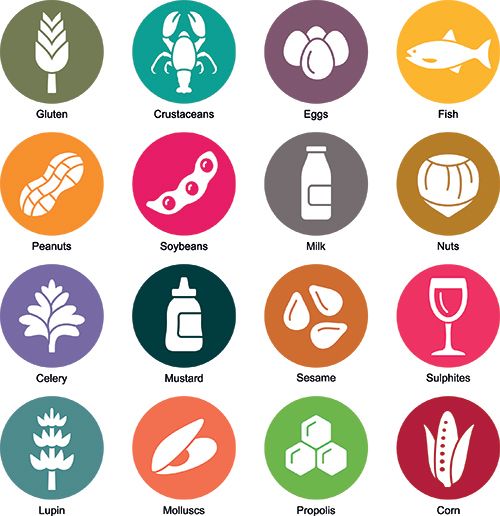Challenging Allergen Uncertainty Using LC–MS/MS
Researchers attempting to overcome complex matrix interference in commercial food analysis have developed a targeted LC–MS/MS method and open source analysis software capable of identifying allergens in complex food matrices.
Photo Credit: missbobbit/stock.adobe.com

Researchers attempting to overcome complex matrix interference in commercial food analysis have developed a targeted liquid chromatography tandem mass spectrometry (LC–MS/MS) method and open source analysis software capable of identifying allergens in complex food matrices (1).
With an estimated 5% of adults and 8% of children being affected by food allergies (2), the conundrum of food selection is a common occurrence for many people. Between the potential dire consequences of eating the wrong product and the desire to identify and consume food without too much of a thought process lies the daily battle with food labelling. Thankfully, with many countries legislating for more detailed food allergen labelling, this battle has been made significantly easier. However, the potential for contamination during agricultural or manufacturing processes remains. This is despite the increase in allergen control plans by manufacturers, who have also, in their desire to play it safe, adopted precautionary allergen labelling (PAL). These PALs have led to a lot of confusion among consumers, with many ignoring these precautionary labels all together under the assumption that the risk is low (3–6). These PALs represent a failure when it comes to allergen detection and should be replaced with labelling more representative of the actual risk of allergen presence.
To address this issue and better understand allergen contamination, sensitive and robust methods are required to quantify allergens in commercial foods. Current methods often use targeted LC–MS/MS in multiple reaction monitoring (MRM) mode. While significant improvements have been made to the methods using this technique, problems still exist with regards to interference and matrices. Understanding the effects of interference for allergen detection is critical because ingredients possess unique profiles that, when combined into food and modified through processes such as baking, result in innumerable potential matrices. The use of stable isotope labelled (SIL) peptide analogues prior to injection can help with these issues, however, this is not yet commonplace (1). To correct this shortfall in knowledge, researchers used a computational approach to investigate interference from diverse food matrices and applied this to help understand the patterns of allergen contamination in commercial foods with and without PALs. In the process they developed a freely available, open source software package called Matrix-Dependent Interference Correction (MADIC). The program identifies interference and, when applied to a method targeting 14 allergens, among 84 unique food products, found numerous patterns of allergen contamination, such as wheat in grains or milk in chocolate containing products, among others.
References
- D. Croote, I. Braslavsky, and S.R. Quake, Anal. Chem. 91(15), 9760–9769 (2019).
- S. Sicherer and H.A. Sampson, J. Allergy Clin. Immunol. 133, 291–307 (2014).
- G.A. Zurzolo et al., J. Med. J. Aust.198, 621–623 (2013).
- M. Ben-Shoshan et al., J. Allergy Clin. Immunol.129, 1401–1404 (2012).
- L. Noimark et al., J. O. Pediatr Allergy Immunol.20, 500–504 (2009).
- M. Marchisooto et al., Allergy71, 1081–1085 (2016).

New Method Explored for the Detection of CECs in Crops Irrigated with Contaminated Water
April 30th 2025This new study presents a validated QuEChERS–LC-MS/MS method for detecting eight persistent, mobile, and toxic substances in escarole, tomatoes, and tomato leaves irrigated with contaminated water.
Accelerating Monoclonal Antibody Quality Control: The Role of LC–MS in Upstream Bioprocessing
This study highlights the promising potential of LC–MS as a powerful tool for mAb quality control within the context of upstream processing.
University of Tasmania Researchers Explore Haloacetic Acid Determiniation in Water with capLC–MS
April 29th 2025Haloacetic acid detection has become important when analyzing drinking and swimming pool water. University of Tasmania researchers have begun applying capillary liquid chromatography as a means of detecting these substances.

.png&w=3840&q=75)

.png&w=3840&q=75)



.png&w=3840&q=75)



.png&w=3840&q=75)











